How to Win Featured Snippets and Set Expectations
This is a guide on how to win featured snippets. It's also a guide on how to not over promise.
We've been tracking about 350 different keywords for a couple months to better understand how featured snippets work and which ones you can realistically win.
- The basics
- A process for getting more featured snippets
- Our keyword set
- 1. Find a set of keywords
- 2. Track those keywords
- 3. Find which featured snippets we can possibly win.
- 4. Attempt to win the featured snippets
- Continue tracking and improve the fundamentals
- What are featured snippets
- What are the main types of them?
- What isn’t a featured snippet?
- Conclusions
The basics
Not sure what featured snippets or not familiar with SEO terminology? Skip to the bottom. Otherwise we're going to jump straight into the meat of this post.
A process for getting more featured snippets
From a 10,000ft view, it's not exactly rocket science.
- Find a set of keywords.
- Track those keywords
- Find out how many featured snippets we could possibly win.
- Attempt to win those.
- Slowly improve our fundamentals to increase the number of FS we could possibly win at 2.
Our keyword set
To get data to work with for this blog post, we're tracking a set of keywords you can find here in this Google sheet.
You can view the full dataset on our public featured snippet dashboard if you'd like to dig into it.
1. Find a set of keywords
Two broad options here:
- Take all the keywords you're tracking and look at those.
- Go to a tool like SEMRush, Ahrefs etc. and download all of the keywords where they have a featured snippet.
You might need to repeat the second time as featured snippets do appear and re-appear over time.
2. Track those keywords
Then you're going to want to track any keywords you're not currently tracking with daily rank tracking.
We offer a straight to warehouse rank tracking product, so we've used that (surprising no-one), but any daily rank tracker with rich enough information that you can export to Excel/Google sheets will do.
We track for two reasons:
- To calculate how many we might be able to win (before)
- To see if we're winning the featured snippet (after)
3. Find which featured snippets we can possibly win.
There are a couple things you should consider:
It really helps to be in the top 4
This graph shows which rank a featured snippet URL appears in, when it's not in the snippet.
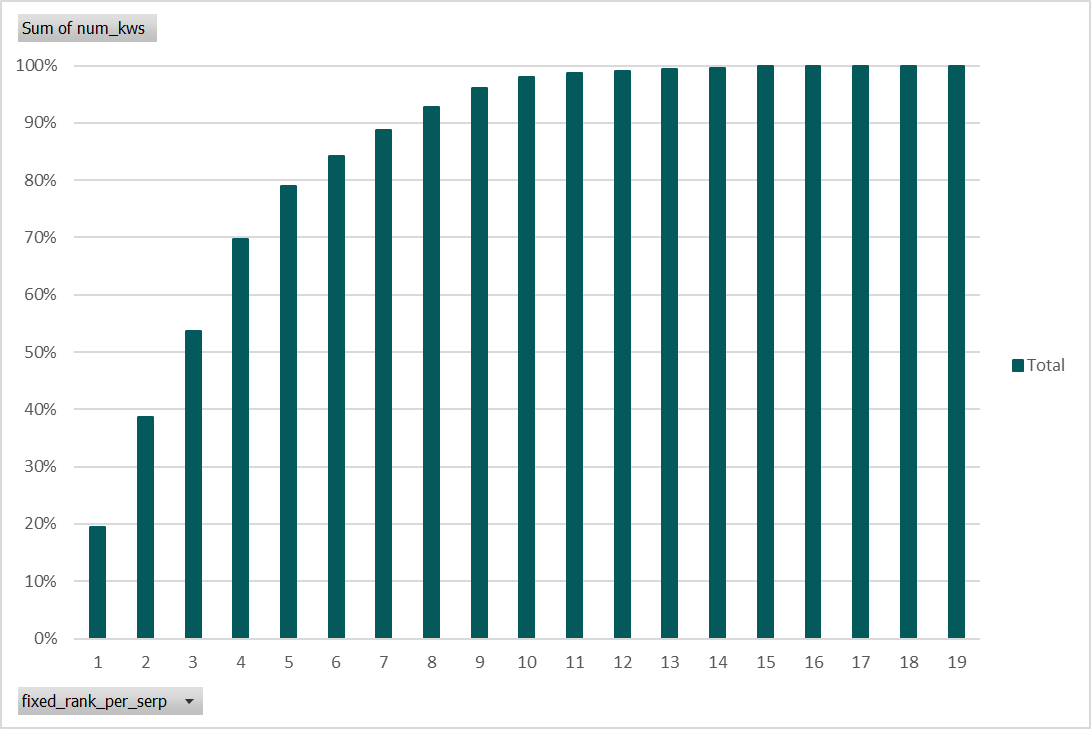
About 70% of the top featured snippets come from the top 4 positions.
At the very least you want to be in the top 8.
Where do featured snippet URLs rank when not a snippet?
Now being outside of that doesn't exclude you and a super volatile FS will help that.
Take a look at this hyper volatile FS for the term “spam scoring” on mobile in the US. It's so volatile it's hard to read with a 28 day period.
Each day often has multiple featured snippets and URLs change a lot.

Buried within that we can pull out:
Who leap from about rank 12 to having a featured snippet for 2 days.
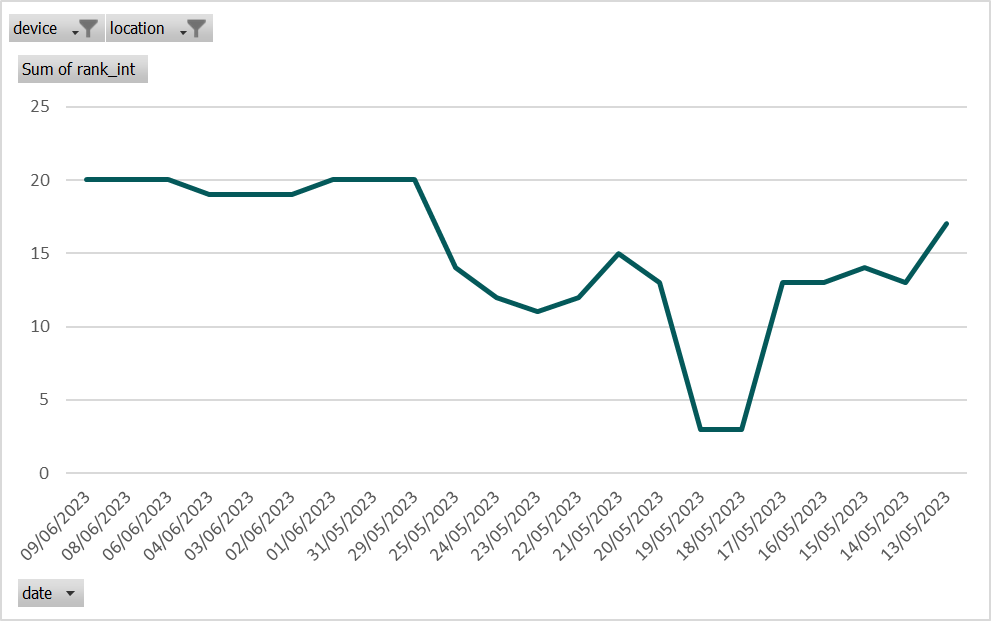
It is possible to do it outside of the top 4, it's just not that likely and you want to forecast and set expectations accordingly.
It really helps to have a volatile featured snippet
Featured snippets which never change in a month are a lot harder to win.
Google has found a featured snippet which satisfies the query and it's not testing them any more.
How many featured snippets are stable?
For the most recent month in our sample around 57% of the FS's didn't change at all.
Now that doesn't mean it won't ever change them again:
Check out this SERP for "What is the title tag" on desktop US.

See the single green new URL at the end? Google eventually tested another site, but it's not doing it regularly and these will be harder to win.
How can you calculate volatility?
We've calculated volatility here as follows:
- The % of days that the most common featured snippet URL isn't ranking.
You only want to really care about the featured snippets which stick around at first
Google tests featured snippets. Sometimes it just decides they're not needed.
For a date period of 28 days for our keyword set we had 196 featured snippets. 65% appeared more than 80% of the time.
You can see the full distribution below:
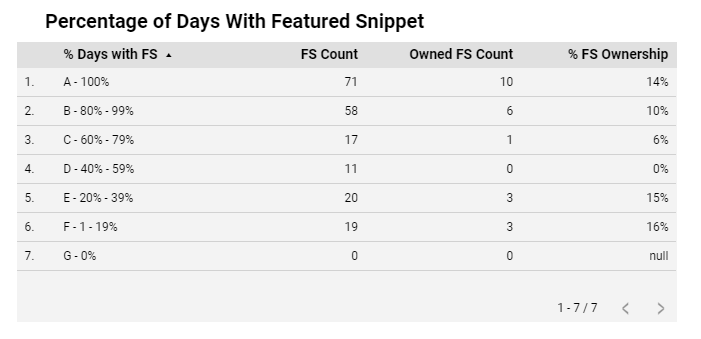
Additional context for the table:
- FS Count: Number of featured snippets
- Owned FS Count: The number of owned featured snippets
- % FS Ownership: What % of days did we hold the FS snippet.
If we're being realistic about the featured snippets we can win, we need to check how long the FS exists for.
How can you calculate FS appearances?
We took the whole time period and counted the number of days where the featured snippet appears.
Pull all of those together
Get all these numbers together. In sheets you're gonna want to then filter to specific segments.
In our featured snippet report we visualised this as a set of tables you can cross filter between:
But you can accomplish the same thing in a spreadsheet.
The end goal is to be able to find the:
- Volatile FS's where we rank in the top 4 and the FS snippet appears consistently.
Once we've done that we then start to relax the various criteria e.g. picking SERPs where we only rank 5-7, or those where the FS isn't as volatile as time and budget allows.
This will allow us to make a sensible forecast about what is actually possible
4. Attempt to win the featured snippets
Once we've got our list of featured snippets to target we're going to try and optimise for them. Our steps are as follows:
Have a generally good page on the topic
Good main headline, title, content that satisfies the user, internally well linked etc. etc.
You know standard SEO stuff. Moving on.
Is there a primary featured snippet type?
Onto the interesting stuff. First and most important: Is the featured snippet primarily showing one type? (It often is).
If it is, then we're just gonna optimise for that and do nothing else.
For example looking at “title tag length”, we can see that it's all paragraph all the time.

So we want to design a paragraph to hit that featured snippet.
Put your answer and question in close proximity in the right format
The traditional version of this is to follow the answer directly after a heading in the HTML using the right semantic HTML elements that Google wants and this still works great!
For example here's some hypothetical HTML to target a paragraph snippet.
<h2>What is on page SEO</h2>
<p>On-page SEO is the set of optimisations you can do to your website that you directly control. E.g. changing your title, content. Building backlinks, creating branded search mentions etc. is off-page SEO</p>
Matching the type of the featured snippet (so this is a list):
<h2>What does on page SEO cover:</h2>
<ul>
<li>Title</li>
<li>Meta Description</li>
<li>Internal linking</li>
</ul>
Or a table (this is a really dumb table, but you get the idea):
<h2>What does on page SEO cover:</h2>
<table>
<thead>
<tr>
<th>Category</th>
<th>SEO activity</th>
</tr>
</thead>
<tbody>
<tr>
<td>title writing</td>
<td>on-page</td>
</tr>
<tr>
<td>link building</td>
<td>off-page</td>
</tr>
</tbody>
</table>
You might not be editing HTML directly in your content editor, but if you're using the offered table and list elements, it typically will be doing this behind the scenes and you can then go inspect the HTML to check.
Copy everyone else who had the featured snippets
What is Google looking for in a featured snippet?
Time to go look at the snippet and see what appears for it.
Even better: if you've been tracking it, hopefully you've got the text from the featured snippet historically so you can see what it's pulling
We pull that into a table here in our dashboard:

We show all the different pieces of content for the featured snippet. It's super useful to save this data because it lets you see the sorts of things Google pulls out as answers.
Watch out for patterns in the answers
If you have a got a list of all the featured snippet text, you should then also scan then for patterns.
Sometimes you can see Google is looking for something specific. Like a snippet that shows both something bad and good about the question.
Back in my agency days, we found examples where Google was building the adv/dis bit in the featured snippet, by pulling from two separate chunks of the page. We wrote some featured snippet answer segments that contained by both in one paragraph and it picked ours up in a couple days!
Continue tracking and improve the fundamentals
Tracking the wins
First we track how many we've one.
We either want to track the entire set, or we could categorise the keywords we think are easier to hit and just filter to them.
Here's an example of how we choose to visualise it.
![]()
But essentially you just want to make sure you're tracking it.
Improving the fundamentals
The setting expectations part is sometimes depressing. Not everyone gets to play the featured snippet game as was hopefully obvious by the data in this article.
By pulling the data we can save ourselves a lot of time wasted trying to target featured snippets which aren't possible and we can put that time into trying to improve our fundamentals to open up new targets for us to compete in.
What are featured snippets
Featured snippets are chunks of a webpage that Google pulls out to directly answer a users question in the SERP.
Also hello new people! Have a read of this section then hop back up to the top armed with the knowledge to continue.
When you search for a topic, a featured snippet has a change to appear at the top of your result looking like this:
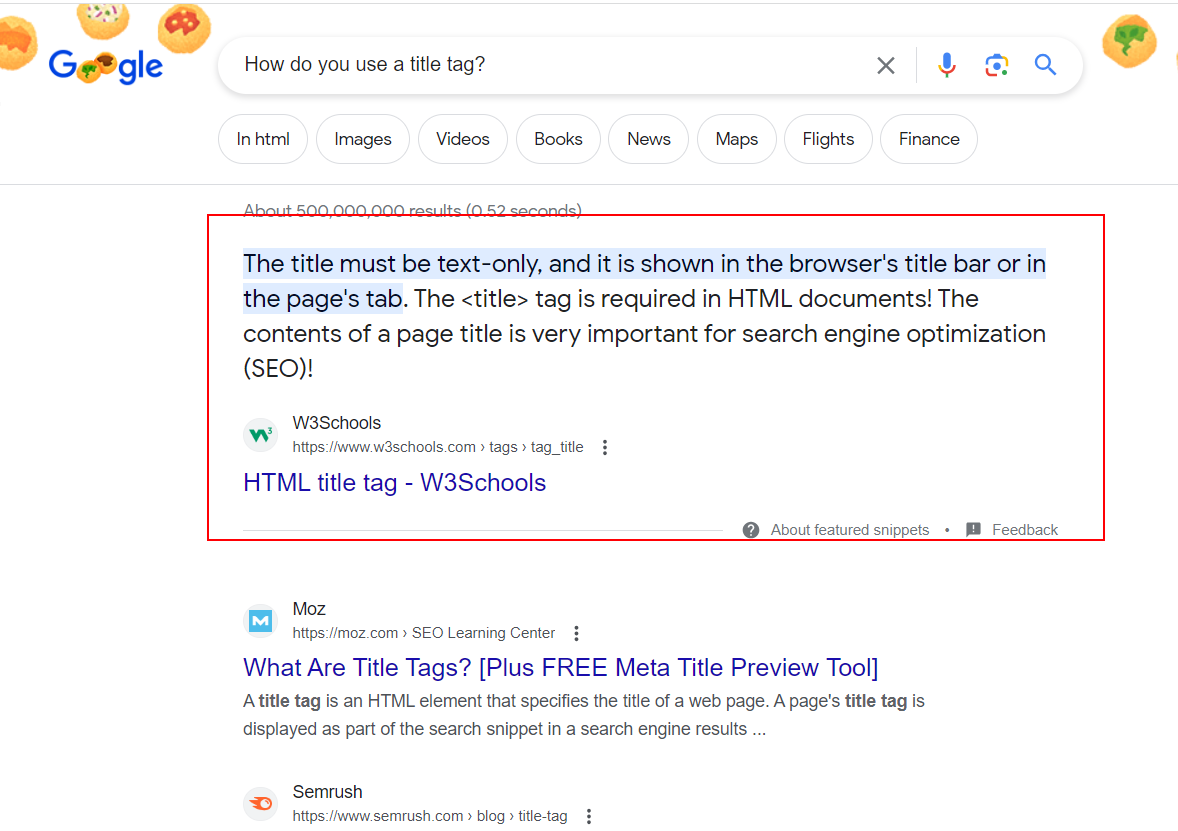
When a URL appears in the featured snippet, it’s removed from the standard organic results below and given pride of place at the top.
What are the main types of them?
There are a handful of different types of featured snippets:
- paragraph
- list
- table
- video
Then you get some combinations of the above (e.g. a paragraph with a list). And sometimes you also get more than 1 featured snippet.
Here's a quick list of example images:
Paragraph
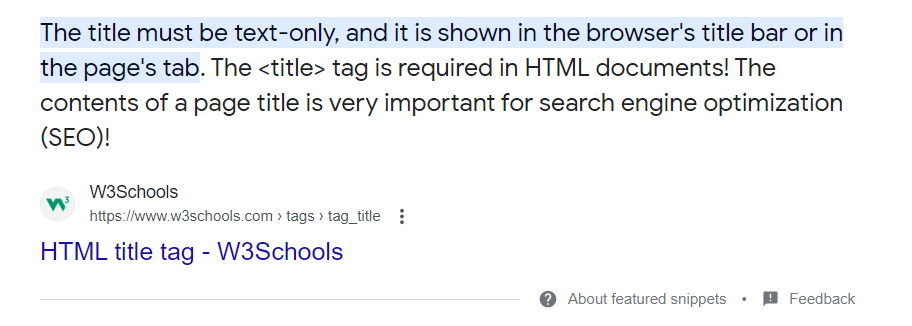
List
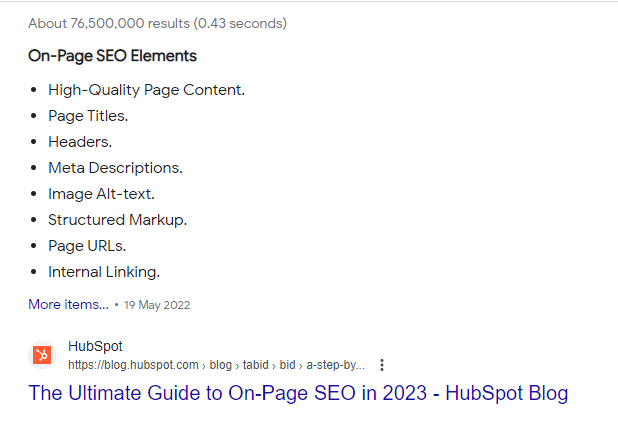
Table
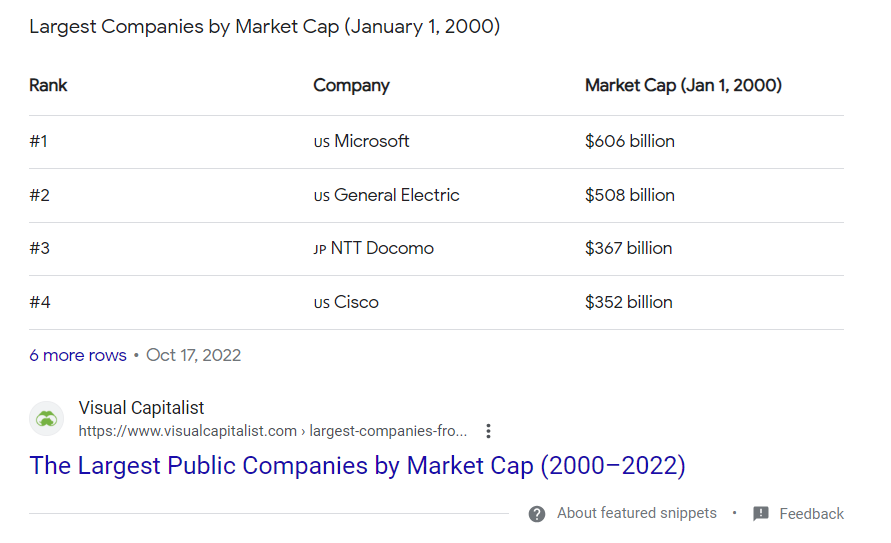
Video
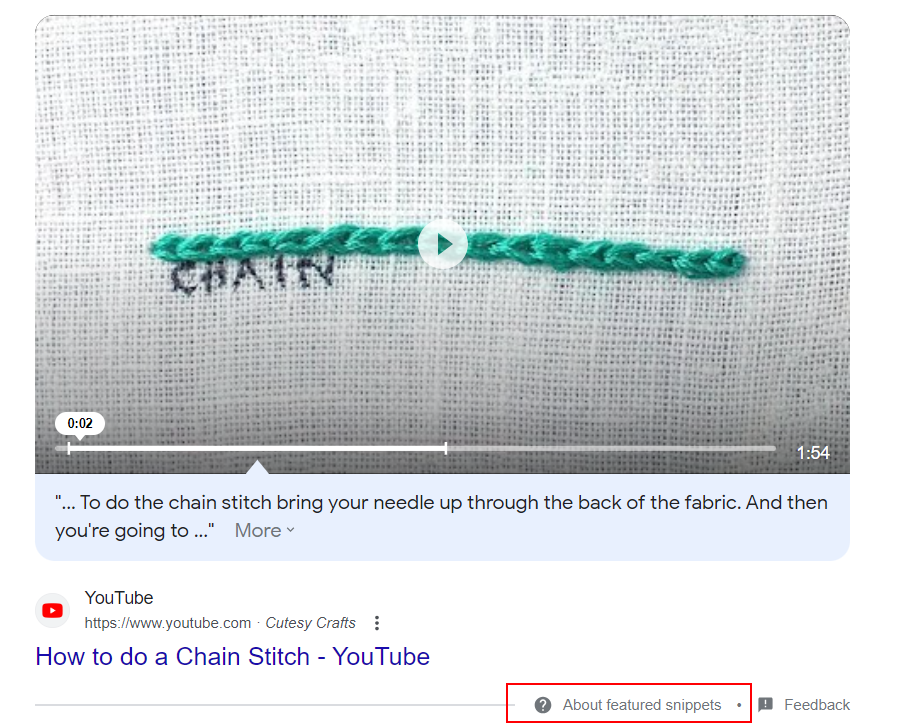
What isn’t a featured snippet?
Featured snippets always have this little tag in the corner. If you take a look at the image above we highlighted it.
There are plenty of things which look like a featured snippet but aren't one.
The most commonly confused for a featured snippet is a knowledge box answer.
It often is triggered by a question like a featured snippet, but unlike a featured snippet it will usually have a specific and correct answer that Google thinks it can answer with no help.

And crucially of course (for our purposes of getting traffic) it will have no link to a website.
Conclusions
Hopefully that's been helpful!
If you're interested in just getting this rather than rolling it yourself, please get in touch about our rank tracking service and we can get you set-up with the dashboard shown, as well as others.
A big thanks to everyone who proof read this and primarily to David Westby, who did all of the heavy lifting to put this dashboard together and is well worth a follow.
